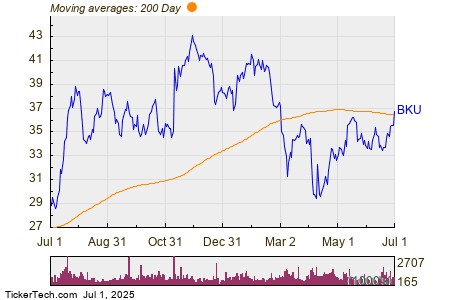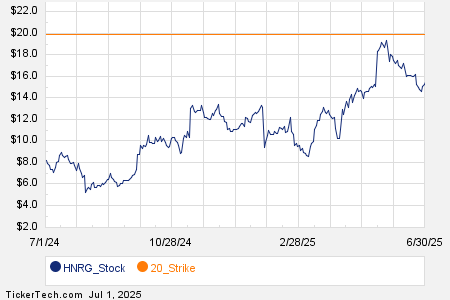AI Stocks Hit Hard: Key Opportunities to Consider Now
Artificial intelligence (AI) stocks have faced significant challenges over the past few months. In January, China’s DeepSeek AI led to a sell-off among chipmakers by announcing advancements in developing a large language model that requires less computational power.
The sell-off intensified when Nvidia (NASDAQ: NVDA) released financial results that didn’t meet investors’ high expectations. This situation worsened in February due to the Trump administration’s trade policies affecting China, Mexico, and Canada, with Taiwan—a major manufacturing site for Nvidia—potentially facing future tariffs.
Currently, Nvidia’s stock trades over 20% below its peak from earlier this year. While some investors may see this as an ideal time to buy shares of Nvidia, they should also consider other stocks that have experienced similar declines but may offer even more attractive investment opportunities. Here are three stocks that warrant attention right now.

Image source: Getty Images.
1. Micron Technology
Those optimistic about Nvidia’s capacity to continue selling its high-performance GPUs to hyperscale cloud customers should pay attention to Micron Technology (NASDAQ: MU). Micron produces a crucial element of Nvidia’s chips: high-bandwidth memory (HBM).
Memory rather than compute power often serves as the limitation when training large language models. As the complexity of these models grows, so does the demand for memory capacity and quicker access. Consequently, advancements in memory chips can notably benefit hyperscale operators. Micron stands as a leading memory chip manufacturer, providing cutting-edge HBM chips to Nvidia and others.
Moreover, memory is vital for inference processes. Enhanced memory capacity not only accelerates responses but also allows AI systems to maintain larger context windows. As the industry shifts toward on-device AI, manufacturers of personal devices will likely increase their memory needs.
However, investors should consider several risks associated with Micron. Establishing a significant competitive advantage in memory chips can be challenging, as components can be substituted with alternatives in data centers and consumer devices. This competition has enabled Micron to gain traction over larger companies in recent years, but it necessitates ongoing investment in research and development to maintain its technological edge.
Additionally, as a vertically integrated chipmaker, Micron produces its memory chips, which can benefit the company when demand surges but poses risks when demand declines. This cyclical nature affects Micron’s stock performance.
Nonetheless, Micron shares are currently attractively priced. With a forward P/E of only 15, the valuation appears low. Once again, Micron’s stock often appears cheap at the peak of its cycles. Given the rising demand for memory chips driven by AI advancements, this cycle could extend longer than usual. Analysts predict earnings per share will grow 62.5% in fiscal 2026, following an impressive 429% increase this year.
Micron’s price-to-sales ratio of around 4 aligns with its five-year average, suggesting the stock is fairly valued with significant upside potential as demand for memory chips grows.
2. Oracle
Oracle (NYSE: ORCL) has maintained leadership in database systems and enterprise software. As big data and AI rise, Oracle’s database solutions have become vital for many organizations. Over the years, it has adeptly transitioned to support cloud computing platforms as companies move from on-site equipment to cloud environments.
Oracle’s database management software now supports all three major public cloud platforms, resulting in robust growth. Management reported a 92% sequential revenue increase for Database MultiCloud in the third quarter.
Furthermore, Oracle has effectively positioned its own cloud infrastructure as a complementary option to the leading public cloud providers. Over the past three years, Oracle Cloud Infrastructure has emerged as a primary revenue driver, demonstrating accelerating growth.
Given the increasing demand for AI infrastructure, Oracle’s remaining performance obligations reached $130 billion at the end of the last quarter—up 63% year-over-year. Management plans to double its data center capacity by 2025 to meet this demand.
Oracle capitalizes on the high switching costs associated with its database software, combined with the tight integration of its software and cloud services. Despite numerous competitors, Oracle has proven its security and reliability in the market. A database outage can have dire consequences, deterring enterprises from migrating away from Oracle.
Following the recent sell-off, Oracle Stock currently trades at 25 times forward earnings estimates. Considering the strong revenue growth expectations, as indicated by increasing remaining performance obligations, and the potential for growing margins, this represents a favorable price point for the Stock.
3. Meta Platforms
Meta Platforms (NASDAQ: META) is arguably one of the largest investors in AI infrastructure and model development. While major cloud providers may have higher infrastructure expenses, much of that investment is typically directed toward servicing other clients. Conversely, Meta’s expenditures are primarily focused on its own AI initiatives.
Meta Plans Major AI Investment to Boost Advertising Efficiency
Meta Platforms is poised to make substantial investments in artificial intelligence (AI), intending to allocate up to $65 billion in capital expenditures this year. This significant spending is driven by the central role AI plays in Meta’s operations.
AI’s Impact on User Engagement and Ad Revenue
Artificial intelligence is integral to various Meta services, such as Instagram and Facebook feeds, and its Reels product. AI optimizes ad placements, influencing which users see specific ads and at what time, ultimately increasing advertisers’ willingness to pay.
Notably, Meta has observed improved results from investing in more extensive and general AI models. The company enhanced its recommendation engine from Reels by applying a broader algorithm to its news feeds, resulting in greater user engagement. As these models are further generalized, the company experiences even better outcomes, enhancing advertising effectiveness and driving up revenue per impression.
Exploring Generative AI’s Potential
Meta is also making significant strides with generative AI. More than 4 million marketers currently utilize Meta’s generative tools to craft ad campaigns. According to CEO Mark Zuckerberg, the future may see AI agents capable of autonomously developing, running, and optimizing entire marketing campaigns based on minimal inputs.
Furthermore, generative AI could enhance the monetization of Meta’s messaging apps through improved chatbots. These advanced chatbots could support businesses in creating effective customer service and sales interactions, potentially boosting sales and enhancing customer satisfaction at lower costs. Analyst Ralph Schackart from William Blair believes this could represent a $100 billion opportunity.
Stock Performance amid Market Challenges
Recently, Meta’s stock has suffered amid broader market sell-offs, trading at just 23 times forward earnings. Although the substantial investments in data centers may suppress earnings growth in the short term, the long-term potential from AI integration remains substantial. This promise may not yet be fully reflected in the current stock price.
Should You Consider Investing in Nvidia?
Before making decisions about investing in Nvidia, it’s wise to consider recent insights:
The Motley Fool Stock Advisor analyst team has identified what they deem the 10 best stocks to buy now, excluding Nvidia. These selections are posited to offer significant returns in the forthcoming years.
Reflecting on historical performance, if you had invested $1,000 when Nvidia was originally recommended on April 15, 2005, you would have amassed approximately $721,394 by now!
In addition to stock picks, Stock Advisor provides a comprehensive roadmap for investment success, including portfolio advice and regular updates, as well as two new stock recommendations each month. Since its inception in 2002, the Stock Advisor service has remarkably quadrupled the returns of the S&P 500.
*Stock Advisor returns as of March 24, 2025
Randi Zuckerberg, a former director of market development and spokeswoman for Facebook and sister to Meta Platforms CEO Mark Zuckerberg, is a member of The Motley Fool’s board of directors. Adam Levy has positions in Meta Platforms. The Motley Fool has positions in and recommends Meta Platforms, Nvidia, and Oracle. The Motley Fool has a disclosure policy.
The views and opinions expressed herein are the views and opinions of the author and do not necessarily reflect those of Nasdaq, Inc.






